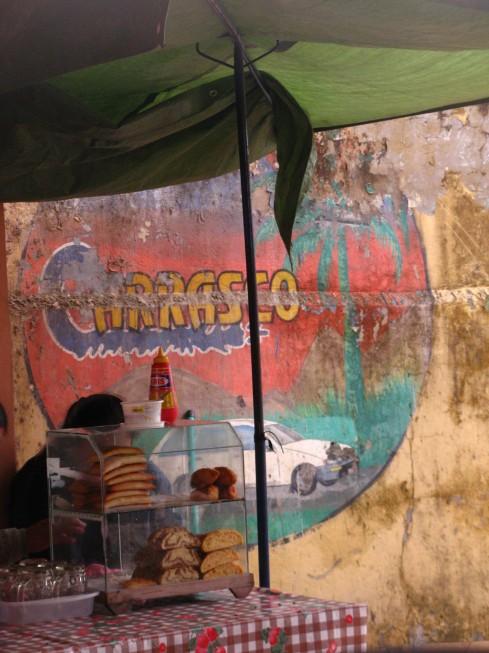Melanie Stern finds three finance directors of businesses who see little but opportunity in Britain’s stricken city centres and high streets
WALKING down your local town centre or high street counting the number of closing down sales or vacant shops makes for a depressing pastime. And not many of us can say our local shopping haunt has not become… well, haunted somewhat.
While so many once-mighty retail brands that formed the core of the British shopping experience are falling as fast as Middle Eastern military dictatorships, the perfect storm of bad news – high unemployment, poorer consumers, high inflation, prohibitive business rates and the threat of the euro imploding – makes it a hostile time for new businesses to form and take their place. Those pressures do not look to be ebbing away in 2012.
But is it really so bad? Behind the wailing “retail Darwinism” headlines is a grain not just of truth, but of hope. For every Woolworth’s or Barratt’s taking its final bow there is a lesson about what tomorrow’s consumer wants that those brands failed to offer. There are highly entrepreneurial outfits large and small, trading on our high streets and in our town centres who are flourishing from the fertile compost of yesterday’s retail business model.
Bucking the trend
While the crucial Christmas 2011 trading period proved disastrous for many of the big players, specialist chocolatier Hotel Chocolat, discount store chain 99p Stores and national food-to-funerals giant the Co-operative Society reported strong sales.
In the four weeks to Christmas, 99p Stores had “double digit like-for-like sales – simple things like kitchen foil and bin bags did well,” chief financial officer Saleem Karim tells Financial Director; Peter Harris, Hotel Chocolat’s co-founder who recently moved from the FD role to strategy director, reports that sales “were at the upper end of our expectations – not that it wasn’t tough”. Martyn Wates, who was group CFO at the Co-operative Society until his recent promotion to group deputy chief executive, says that though his business still makes most of its revenues through its shops, it enjoyed a 20% like-for-like rise in its online electricals sales over Christmas. Impressively, in the middle of a punishing economic downturn, the group experienced a surge in Land Rover sales from its three dedicated Co-operative dealerships in Yorkshire.
Though these businesses are completely different, what they have in common is worth noting in 2012. All of them have significantly expanded their estates in 2011 and intend to continue doing so in the next 12 months, taking advantage of a flooded commercial space market, using the footfall they command on shopping streets and their brand strength to negotiate a fair price, and moving quickly. Noted in the recent Portas Review about the predicament of the high street, on behalf of the Department for Business, Innovation & Skills (BIS), the growing number of empty shops is hurting the remaining traders, and renting them to charity shops is not helping the economy. The inflexibility of landlords on rent prices and lease length, set against the forthcoming 5% rise in business rates – already costing as much as 50% of the value of retail rent space – is one of the top challenges retail finance directors see in 2012.
Opportunism
The Lalani family, owners of 99p Stores, became an immediate presence across South London in 2009 when co-founder Hussein bought 15 stores from the administrators of Woolworth’s, and within weeks had many of them open for business. The company aims to open 18 more stores in 2012, mostly in retail parks where CFO Karim thinks many of the commercial space deals are going to open up.
“We don’t have a plan as to where specifically we’ll open up – though we know where the gaps are for us. We’re more opportunistic than that,” Karim tells Financial Director. “It depends on getting offered property that matches our needs more than where it is. When Focus DIY went into administration we were offered its entire property portfolio, but we were then able to pick and choose the bits we wanted, just like with Woolworths. We’re getting offered between 60-80 properties every day.
“In 2012 I think a lot of retail parks will be looking to half their estate size,” he adds. “Now that we’re well known due to our expansion in 2010-11, those landlords see us as their first port of call when those properties come up.”
At the other end of the retail scale, Hotel Chocolat is looking at opening in cities such as Cardiff and Glasgow, but Harris will not put a figure on the number of stores it will aim for. In 2012 he is looking to leverage the brand to get into places with a healthy mixture of locals, students, office workers and tourists. He agrees that the recommendations in the Portas Review to stop upward-only rent reviews should be a matter of urgency for government.
“It’s now easier to negotiate with landlords for the leases we want; our presence on the high street or in a city centre attracts other retailers,” he says. “The strength of our covenants has become less important. But it hasn’t gone far enough. The way landlords operate on lease length makes it difficult to stimulate retail; they need to be ready to offer affordable rent, not five to 10-year leases and upward-only rent reviews you just can’t get out of when times become tough.”
Bank on the Co-op
The Co-op plans to open 300 more shops and create 7,000 jobs in its supermarket business by 2013, but the biggest prize is the potential to buy up 632 UK retail bank branches from Lloyds as it is forced to sell them to comply with European competition rules. The deal is expected to be set in the first quarter of 2012 and would make the Co-operative Bank the UK’s seventh-largest in its sector. In addition, Wates says the group will exploit the Legal Services Act amendments made last October that allows banks to offer consumer legal advice. A successful trial of its existing consumer legal services business was conducted through its existing banking network in 2011, but the Lloyds deal could see it dominate that field this year and up their presence on high streets and in town centres.
“The Lloyds deal would be transformational to the society at large, not just our banking business, while provision of impartial legal advice to consumers is right at the heart of our ethos of social justice as a business. At the moment, it’s something of a postcode lottery,” Wates tells Financial Director. “We have ambitious plans to grow the legal services business in 2012 and if we can scale it right up, it will make it even cheaper to deliver.”
Deloitte recently put a figure of 11% on the level of retail administrations to be expected in Q1 2012 as VAT payments on Christmas sales come due alongside business rates. If some of those administrations end up becoming pre-pack administration deals – as the recent rescues of high street retailer La Senza and Blacks Leisure did (see page 47) – any stores deemed to be under-performing are likely to be left out of acquisitions, creating yet more empty square footage in our shopping precincts. Smaller retail businesses, with solid financials that can move swiftly, may find that in 2012 those landlords are unusually happy to negotiate to more reasonable rental rates.
Once again, though, Deloitte’s prediction is a boon for an entrepreneurial upstart like 99p Stores.
“It’s another opportunity to move into new areas, because we now have access to property we previously wouldn’t have had. There’s less competition so we can command the sort of arrangements we want,” says Karim. “Shopping centre companies used to turn their noses up at us – and suppliers would tell us to go and talk to their distributors. But in the recession we’ve found we now have mostly middle class customers, and suppliers are happy to deal with us directly.”
Parking woes
One of the biggest challenges in 2012 for retailers is simply consumer confidence, and Harris, Karim and Wates concur that one of the deciding factors in gathering footfall for them will be the cost of customer parking in high streets and town centres. It is often very cheap in out-of-town shopping malls. In her review for BIS, high street troubleshooter Mary Portas says modern shoppers see free parking as a “non-negotiable” and recommends local councils implement free controlled parking dedicated to their town centres.
“In many town centres I have visited for this review, parking has been run-down, in an inconvenient place, and most significantly really expensive,” says Portas. “There are some places that are doing things differently.”
She points to the city of Chester where the local council has laid on free parking after 3pm to stimulate trade.
99p Stores’ Karim finds this issue significantly raises the cost of doing business.
“When we are taking deliveries, we find these militant wardens looking to give us a ticket at any opportunity,” he says. “We can’t do night-time deliveries as that would disturb residents, so in order to get the deliveries unloaded as quickly as possible, we have to pay for extra staff to unload everything before the warden shows up.
“If councils allowed longer parking times, our customers would be less stressed out worrying about getting back to their car before they get a fine, and spend more time shopping. It could mean they put one extra item in their basket.”
But businesses should be careful of spending 2012 wishing local government would chip into their survival. Local businesses could club together and part-subsidise parking – even an extra hour or two each day – or take on Mary Portas’ recommendation that they work in concert with councils and community representatives to address structural issues.
Hotel Chocolat’s Harris says that wherever his stores rely on paid-for parking business deteriorates markedly, but he does not think such an approach would solve it.
“That’s just not how things work,” he says. “You need to concentrate on your own business. We’re not a business for running things by committee: we’re not really political and we prefer just to get on with it. I don’t think it would be a good use of our time.”
Consumer confidence
No one expects an economic recovery in 2012, but retailers live and die on consumer confidence. While more of our household brands go to the wall every day, confidence among retailers that they will not be among their number is just as important.
The strong performance of 2011 Christmas food sales in higher-end retailers such as Waitrose – compared with the disappointing performance of other types of retailers over the festive period – demonstrates that as shoppers get poorer, they will try harder to find a way to afford the odd treat. And everybody can make use of 99p washing up liquid or binbags. But even for businesses as entrepreneurial as 99p Stores or Hotel Chocolat, if customers cannot easily and cheaply get to their stores, the high street faces a bleak future.
This article was published in Financial Director magazine’s February 2012 issue – if you like it, help me out – click here and tweet it!







